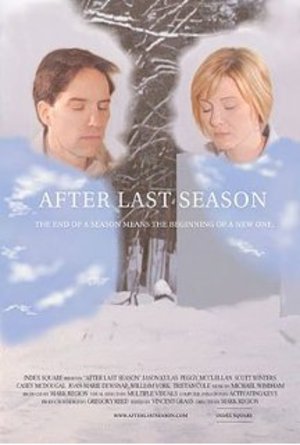 A jaw-dropper that deserves to be ranked alongside “classics” like THE ROOM and FATEFUL FINDINGS. Yes, it’s that good—or, rather, bad, although bad doesn’t adequately describe this film. Truthfully I’m not sure there exists an adequate description for AFTER LAST SEASON. It simply…is.
A jaw-dropper that deserves to be ranked alongside “classics” like THE ROOM and FATEFUL FINDINGS. Yes, it’s that good—or, rather, bad, although bad doesn’t adequately describe this film. Truthfully I’m not sure there exists an adequate description for AFTER LAST SEASON. It simply…is.
You may have heard about the trailer for this film, which confused seemingly everybody, and led to widespread internet rumors that the film being advertised wasn’t real. AFTER LAST SEASON is indeed real, although much about it, including its writer-producer-director-cinematographer’s name (Mark Region), would appear to be fabricated.
Unbelievably enough, the budget for this atrocity was an alleged $5 million (it’s been claimed that number is highly exaggerated, with which I’ll have to concur). Even more unbelievable is the “fact” that it was shot in 35mm over the course of a reported ten years! What does make sense is that in 2009 the film played in a total of four theaters across the US, and was released on DVD shortly thereafter, a DVD that is now long out of print.
Matthew, a brain surgeon, is working on an experimental diagnosis for schizophrenia in a secluded research laboratory. He eventually calls in a young volunteer, the pretty blonde Sarah, to test out a machine he’s created that allows him to read her thoughts.
Sarah’s mind produces some disturbing imagery, including a computerized man stabbing another. This leads Sarah to admit she can visualize murders before they occur; the vision she just broadcast is apparently the latest manifestation of this “talent.” The experiment continues, with Sarah visualizing the interior of a house, in which resides a woman throwing some kind of square object against a wall—but then an evil man appears and attacks the woman with a knife.
A bit later Matthew learns that, sure enough, a woman who lives nearby has been brutally stabbed—and then, shortly after the completion of the experiment, an unseen presence enters the room and attacks Matthew and Sarah with an invisible knife.
It turns out, however, that the above was merely a dream experienced by Matthew. In the here-and-now he’s being interviewed by Sarah, who is extremely curious about his dreams. But then Eric, a knife-wielding freak, enters the building. But before Eric can do anything an invisible presence much like the one from Matthew’s dream disarms and knocks out the attacker, and addresses Sarah by name in a disembodied voice…
An entire book can be written about this film’s “style,” which accidental or not is as distinct and fascinating as that of any of the European heavyweights of the 1960s. The whole film has a highly detached, clinical vibe, imparted by weirdly stilted camerawork that matches the acting, accomplished by performers who appear be hypnotized (not inappropriate given that much of what occurs in this film is in fact a dream), and sound design that’s eerily silent. What little music there exists here is accomplished via a few chords plucked on an electric piano.
There are few rules of cinematic grammar that aren’t broken at some point in AFTER LAST SEASON. There’s an abrupt cut from a character standing on one side of a door to him standing on the other side, which fits right in with the many inexplicable close-ups of blank walls. The art direction consists of cramped furniture-less interiors that all look unfinished; unpainted wood is evident throughout, as are rolls and sheets of paper, which cover walls, tabletops and even the insides of windows (to diffuse the outside light, although generally such an effect is achieved by sticking filters on the outside of windows).
Further oddities include a vomit-inducing color scheme that favors shades of blue, white and pink; a lengthy conversation between two women in which the only bit of pertinent information disclosed is that one them has a friend who’s allergic to shrimp; and off-screen pipes that can be heard rumbling throughout the film, and nearly drown out the dialogue in several scenes.
Then there are the mental visualizations. Accomplished via rudimentary computer animation, these shots have a bizarre logic all their own, with slow moving personages subsiding amid a riot of indistinct shapes. Even stranger is the invisible knife attack sequence, which despite its clumsiness, or perhaps because of it, is deeply unnerving in its lack of music and slow—very slow—sense of deliberation.
Vital Statistics
AFTER LAST SEASON
Index Square
Director/Producer/Screenwriter/Cinematographer: Mark Region
Editing: Vincent Grass
Cast: Jason Kulas, Peggy McClellan, Scott Winters, Casey McDougal, Joan-Marie Dewsnap, William York, Tristan Cole, Katarina Morhacova, Mary Miederkorn, Kyle Darling, Diane Henderson, Christine McFadyen, Gregory Seymore, Alex Winston, Kathleen McGourthy
